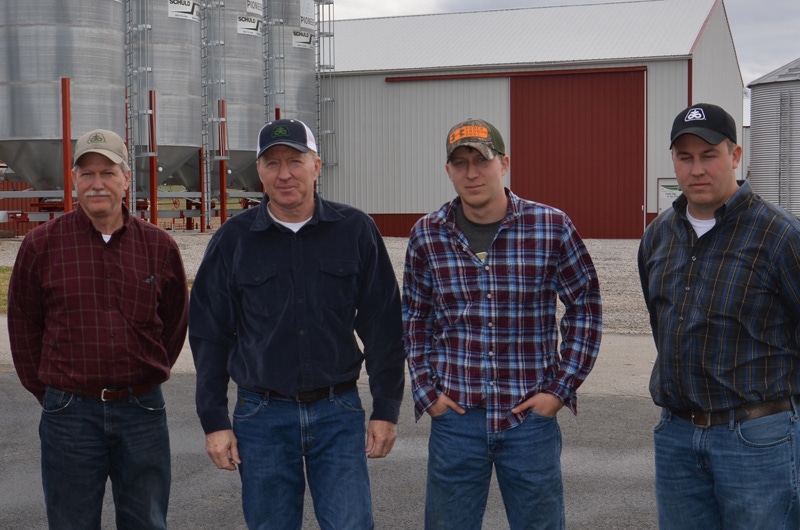June 20, 2014

When ranking which precision technologies are the most profitable to adopt, Vogel Farms, Rockport, Ind., finds that RTK guidance pays off in multiple ways. Certainly it makes the Vogels more efficient, but simplifying on-farm trials is the ultimate payoff. And that’s real money.
Two generations of Vogels manage three enterprises: 3,550 acres of corn and soybeans, a Pioneer seed dealership and 110 beef cows.
Their move to RTK satellite guidance began as a way to speed drainage tile installation (no laser). Now, RTK is on all of their equipment. “It’s so much easier to test ideas with RTK; there’s no stopping or laying things out,” says Eric Vogel, 31.
RTK-placed seeds streamline corn planting, reduce waiting time after spring-applied anhydrous ammonia and enable Eric to test what works on their farm. So far, that’s been plant populations, starter fertilizer and hybrid comparisons.
Replicated starter fertilizer trials showed a 6-7-bushel gain on their poorer soils. Eric planted 48 rows without starter fertilizer, and 24 rows with anhydrous 7 inches away from the seed. Another 24 rows have the anhydrous 15 inches from the seed.
The dual-fertilizer system on their corn planter makes it easy for Eric to gauge the effect of 4 gallons 28% nitrogen plus 4 gallons ammonium thiosulfate with Boron per acre.
This year he’s also testing biological products and Capture insecticide in side-by-side strips across the entire field.
This replicated hybrid comparison is easy with RTK, and improves decisions on what works on the Vogels’ farm. In this case, one hybrid yielded 8.6 bushels more per acre than the other.
Experiments like this one have improved the Vogels’ decisions about what works on their farm. The corn on the right has 2x2 and in-furrow starter. The shorter corn on the left had none.
Corn population replications
This spring Eric applied the same replicated method to corn population testing. He planted two rounds of an entire field at 33,000 seeds per acre, and compares that to population strips ranging from 26,500 to 36,500 seeds per acre. The as-planted information is recorded in the Pioneer Field 360 program, along with two-hybrid trials.
“I alternate strips across the entire field to be sure results are valid,” Eric says.
“RTK has also enabled us to separate the crop rows from ammonia application by 7 inches, and to avoid planting soybeans on top of last year’s corn root balls—that has already improved our stand by at least 10%,” he says. And, this spring’s wet weather delayed anhydrous ammonia application, but the RTK allowed Eric to plant right behind the applicator the day after injection because precise placement avoided burn potential.
Improved RTK seed placement also allows Eric to lower his soybean populations to 125,000-130,000 (from 160,000) on their better soils without any yield sacrifice. Last year, blocks at 125,000-130,00, and 115,000 identified the sweet spot. The 115,000 beans per acre block cost him 2.5 bushels.
He’s also testing for gains from planting in his fall-ripped rows (ripped with in line ripper shank on 30-inch spacing).
Swath control saved the Vogels $7,475 per year in inputs. There are 25 acres' worth of overlap on 1,800 acres of soybeans (saved $1,875 in seed and herbicide) and 28 acres of overlap on 1,750 acres of corn (saved $5,600 in seed, herbicide and N inputs at $200 per acre).
About the Author(s)
You May Also Like




